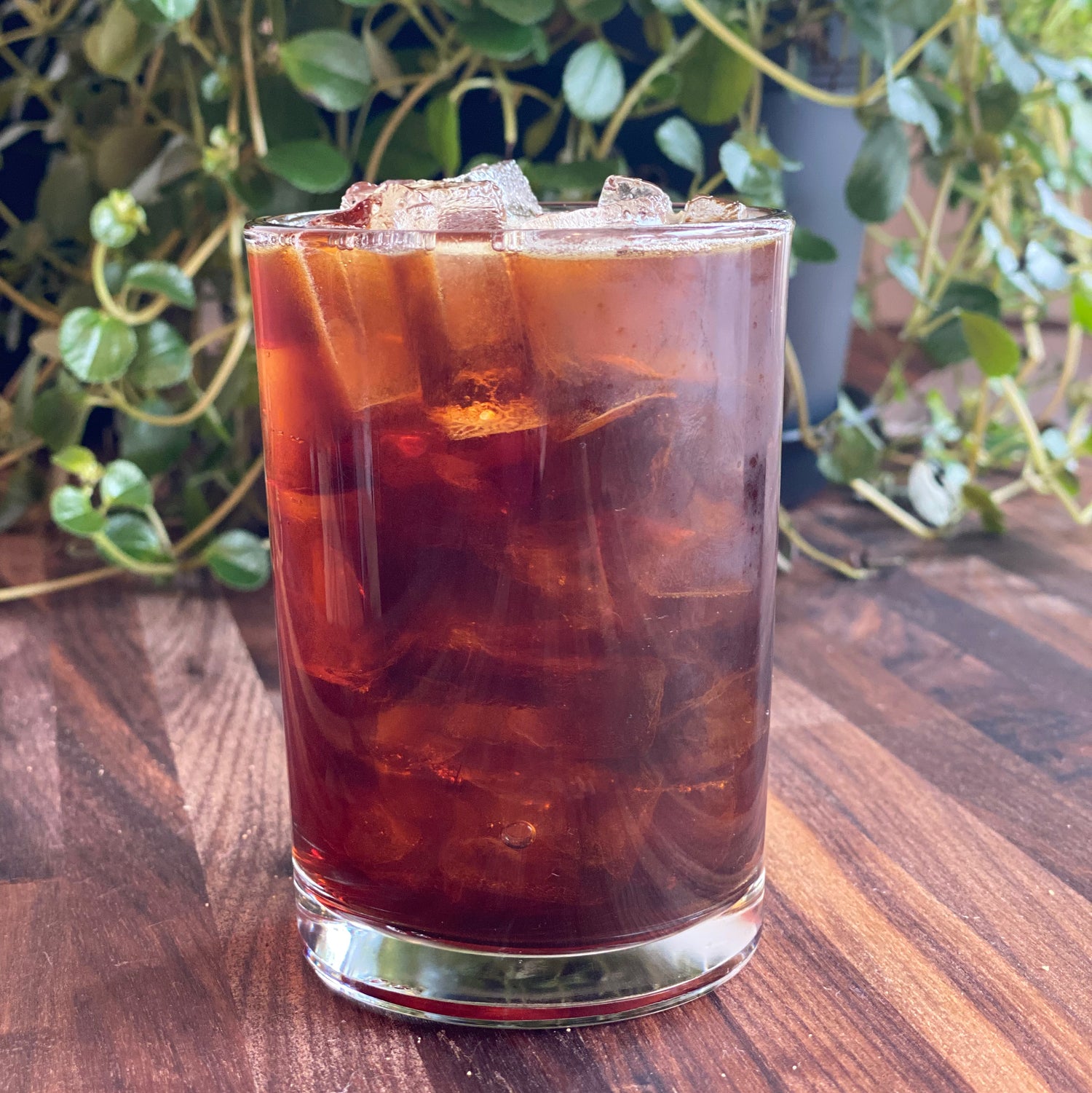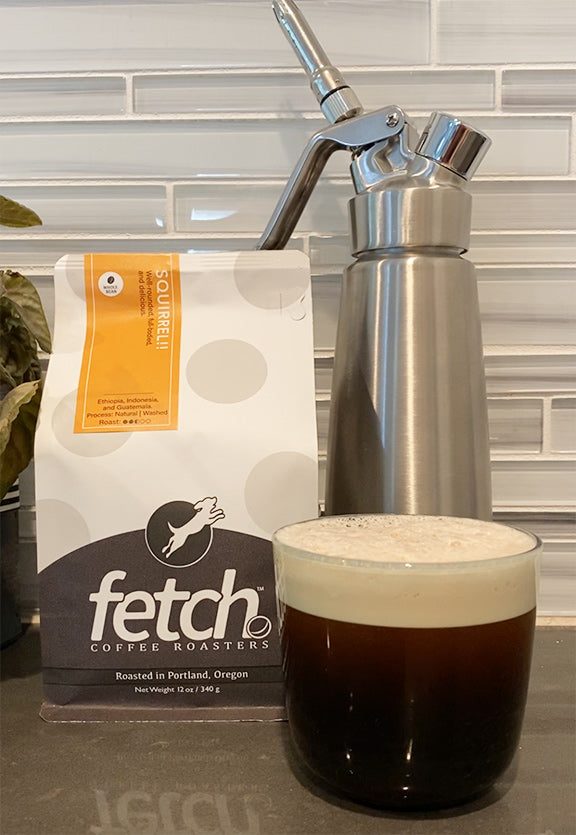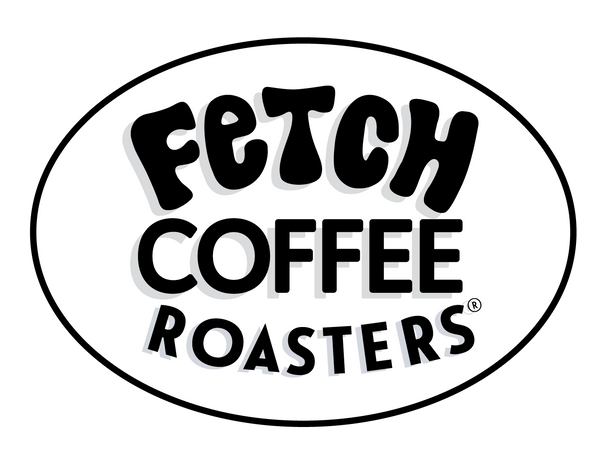Cold Brew at Home
A Simple Guide

Cold brew is delicious when brewed well. Enjoy little or no bitterness, with a smooth texture and increased sweetness. It's also a very simple process. The most difficult part is patience, because a good home cold crew coffee needs about 16 or more hours to brew.
Some more things to consider
If you are new to cold brew and want to compare your current method to ours here are some starting guidelines.
You will need:
- 1 ounce very coarsely ground coffee for every 2 cups of room temp water* (NOT hot).
- 1 glass jar with a lid large enough to hold the amount of water you plan to use
- 1 glass jar or bowl at least as large as the jar above (to strain off the grounds later)
- 1 paper coffee filter (optional)
Step 1: Place very coarsely ground coffee into the jar
Step 2: Pour the measured water in the jar starting with ¼ to 1/3 of the water. Let it form a ‘crust’ of coffee at the toop, then add the rest, Stir or gently mix thoroughly so there are no dry pockets of ground.
Step 3: Stir grounds and water to saturate all grounds and gently stir to mix if there are any clumps
Step 4: Securely place the lid on the jar and set the jar aside
Step 5: After a few hours or when you think about it, turn it upside down a few times gently to oscillate the ground and water. If the jar does not have a leak-proof lid you can also just stir the grounds gently a couple of times.
Step 6: After 16-20 hours, put sieve over another jar or bowl and pour out all contents in the coffee jar. Our suggested starting brew time is 17 hours Now you have cold brew! It will still be a little gritty at this point, so use a coffee filter:
Step 7: Pour the coffee through a paper filter to strain out the remaining grinds. Warning! This last step takes a ridiculously long time. While it seems like it should pour right through it can take a very very long time, so if it is only dripping, not pouring though the filter, don’t worry. This is normal.
Step 8: Rinse out the original glass jar and then use that to store coffee in the fridge.
*Note: There are 2 primary factors you can change to adjust your cold brew (aside from trying a different roast) brew time and the amount of coffee you use. You can always add more or less coffee, or brew longer or shorter amounts of time, but this is a good starting ratio. If you do make adjustments, we suggest only changing one thing. at a time so you know what component made the difference.

Want to try Nitro Home Brew?
Bloom in coffee is the bubbles that come out of your brew. The bubbles are carbon dioxide escaping the beans. By allowing your coffee to bloom, you are helping the carbon dioxide escape, which in turn allows the water to actually touch the coffee beans and thus extract the water soluble elements from the beans that make the drink what it is. To allow your coffee to bloom, plus enough hot water over the ground beans to wet all the beans, and then watch the magic as it bubbles up. After 30-45 seconds you can resume pouring in your water.
Timing
Timing is important. If you are using a french press, for example, brewing longer than the recommended time, approximately 4 minutes, will lead to over extracted coffee - which translates to bitter coffee! So check with the manufacturers of your brew equipment of choice.
Water should be just below boiling point when you pour it into your ground beans. Ideally pour it when it is between 202-205 degrees Fahrenheit. (Boiling point at sea level is 212 degrees Fahrenheit) so if you are heating water on the stove or a kettle we suggest letting it sit for minute or two after boiling and before pouring. If you want something more precise, you can purchase electric kettles with temperature gauges. A gooseneck kettle is best: it helps you get turbulence in the grounds as you pout in the water,, which stirs the grounds into the beans for aqua distribution. The quality of your water also matters. The Specialty Coffee Association (SAC) recommends that your water minerals total hardness of 50-175 ppm CaCO3, a carbonate hardness of 40-75 ppm CaCO3, and a pH of 6-8. We know this is ore thank almost anyone will know about your coffee, but if your coffee tastes funny even when you are doing everything else right, we suggest that you call your local water bureau and ask about the composition of your tap water.
Clean equipment
Last but absolutely not least, whatever you use to brew, make sure there is no buildup of coffee from previous use. Buildup will have rancid coffee oils that make even the best coffee taste terrible. Use hot water to clean your equipment daily. It is generally not recommended that yours dish soap because it is almost impossible to rinse out completely.

Want to try Nitro Home Brew?
Just for fun: If you happen to have a Whipped Cream dispenser at home, you can use it to make your own nitro cold brew.
Simply pour the coffee into the dispenser, follow the directions for your dispenser to add the nitro, and oscillate GENTLY (shaking it as you would for whipped cream will just give you a lot of foam!).
Dispense into the glass of your choice and viola! you have nitro home brew.
